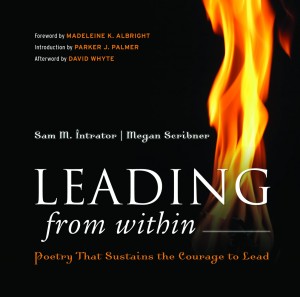Becky van der Bogert’s Reflections on Fire
 “You have an interstitial lung disease and there isn’t anything . . .” I didn’t need to hear the rest. My mother had died of the same disease. But I was clear about one thing: I didn’t have my mother’s resolve to die gracefully and spend my last months preparing my family for life without Mom. I had a strong resolve to live.
“You have an interstitial lung disease and there isn’t anything . . .” I didn’t need to hear the rest. My mother had died of the same disease. But I was clear about one thing: I didn’t have my mother’s resolve to die gracefully and spend my last months preparing my family for life without Mom. I had a strong resolve to live.
The subsequent months brought a successful search for a doctor willing to try new protocols. It was also a time of many questions: “What was the source of my resolve to live?” “Why was I here?” “What does this mean for how I spend the rest of my life?”
My illness was an autoimmune disease triggered by stress, sleep deprivation, and pushing myself too far. And despite all my work to focus on “being” rather than “doing,” when faced with death I realized that my being is “doing.” How could it be that my need to “do” could also become a source of my death?
Judy Brown’s poem helped me through this difficult journey, as I learned to embrace my need to have too many logs burning. As a superintendent of schools, I often found myself responding simultaneously to a child in crisis, a distraught parent, a newspaper reporter at my door, and a spectacular principal on the edge of making a career change because of stress. But what would my life be like if I didn’t have that fire that fuels my beliefs and these “doings”? Perhaps that would be a less acceptable form of death.
—Becky van der Bogert
 Becky van der Bogert is in good health and Head of the Palm Beach Day Academy in Palm Beach, Florida. She has served as a public and private school educator for forty-eight years and was superintendent in Winnetka, Illinois, for thirteen years. Even in “retirement” she is looking forward to finding ways that she can contribute to the creation of environments that support educators in pursuit of their passions.
Becky van der Bogert is in good health and Head of the Palm Beach Day Academy in Palm Beach, Florida. She has served as a public and private school educator for forty-eight years and was superintendent in Winnetka, Illinois, for thirteen years. Even in “retirement” she is looking forward to finding ways that she can contribute to the creation of environments that support educators in pursuit of their passions.
Fire
What makes a fire burn
is space between the logs,
a breathing space.
Too much of a good thing,
too many logs
packed in too tight
can douse the flames
almost as surely
as a pail of water would.
So building fires
requires attention
to the spaces in between,
as much as to the wood.
When we are able to build
open spaces
in the same way
we have learned
to pile on the logs,
then we can come to see how
it is fuel, and absence of the fuel
together, that make fire possible.
We only need to lay a log
lightly from time to time.
A fire
grows
simply because the space is there,
with openings
in which the flame
that knows just how it wants to burn
can find its way.
—Judy Sorum Brown






Leave a Comment